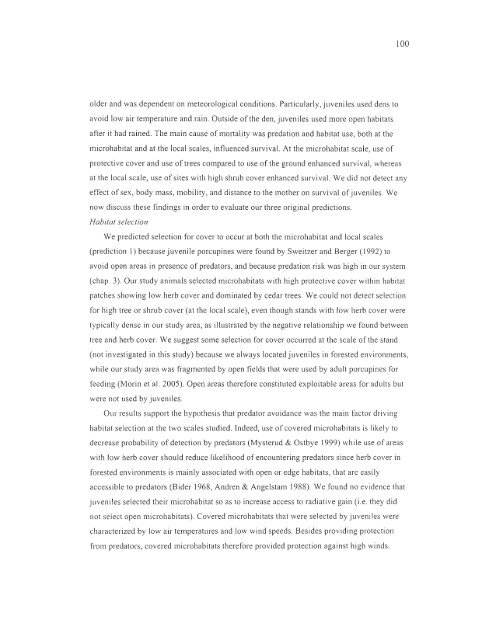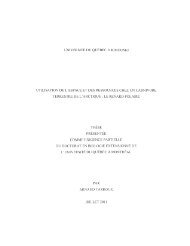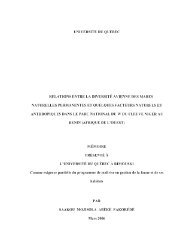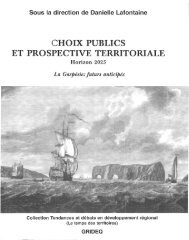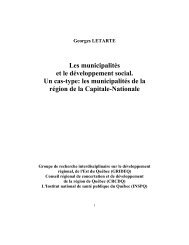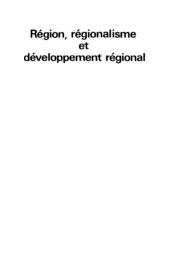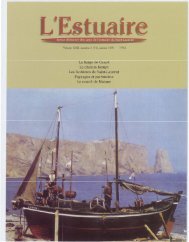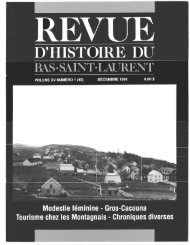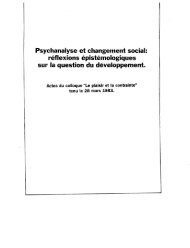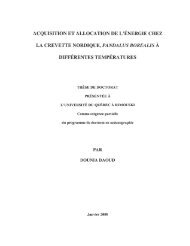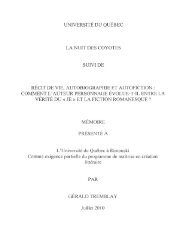influence du climat et de la prédation sur l'utilisation de l'habitat et la ...
influence du climat et de la prédation sur l'utilisation de l'habitat et la ...
influence du climat et de la prédation sur l'utilisation de l'habitat et la ...
You also want an ePaper? Increase the reach of your titles
YUMPU automatically turns print PDFs into web optimized ePapers that Google loves.
100<br />
ol<strong>de</strong>r and was <strong>de</strong>pen<strong>de</strong>nt on m<strong>et</strong>eorological conditions. PaIiicu<strong>la</strong>rly, juveniles used <strong>de</strong>ns to<br />
avoid low air tempe rature and rain. Outsi<strong>de</strong> of the <strong>de</strong>n, juveniles used more open habitats<br />
after it had rained. The main cause of mOliality was predation and habitat use, both at the<br />
microhabitat and at the local scales, <strong>influence</strong>d <strong>sur</strong>vival. At the microhabitat scale, use of<br />
protective coyer and use of trees compared to use of the ground enhanced <strong>sur</strong>vival, whereas<br />
at the local scale, use of sites with high shrub coyer enhanced <strong>sur</strong>vival. We did not d<strong>et</strong>ect any<br />
effect ofsex, body mass, mobility, and distance to the mother on <strong>sur</strong>vival ofjuveniles. We<br />
now discuss these findings in or<strong>de</strong>r to evaluate our three original predictions.<br />
Habitat selection<br />
We predicted selection for coyer to occur at both the microhabitat and local scales<br />
(prediction 1) because juvenile porcupines were found by Sweitzer and Berger (1992) to<br />
avoid open areas in presence of predators, and because predation risk was high in our system<br />
(chap. 3). Our study animais selected microhabitats with high protective coyer within habitat<br />
patches showing low herb coyer and dominated by cedar trees. We could not d<strong>et</strong>ect selection<br />
for high tree or shrub coyer (at the local scale), even though stands with low herb coyer were<br />
typically <strong>de</strong>nse in our study area, as illustrated by the negative re<strong>la</strong>tionship we found b<strong>et</strong>ween<br />
tree and herb coyer. We suggest some selection for coyer occurred at the scale of the stand<br />
(not investigated in this study) because we always located juveniles in forested environments,<br />
while our study area was fragmented by open fields that were used by a<strong>du</strong>lt porcupines for<br />
feeding (Morin <strong>et</strong> al. 2005). Open areas therefore constituted exploitable areas for a<strong>du</strong>lts but<br />
were not used by juveniles.<br />
Our results support the hypothesis that predator avoidance was the main factor driving<br />
habitat selection at the two scales studied. In<strong>de</strong>ed, use of covered microhabitats is likely to<br />
<strong>de</strong>crease probability of d<strong>et</strong>ection by predators (Mysterud & Ostbye 1999) while use of areas<br />
with low herb coyer should re<strong>du</strong>ce likelihood of encountering predators since herb coyer in<br />
forested environments is mainly associated with open or edge habitats, that are easily<br />
accessible to predators (Bi<strong>de</strong>r 1968, Andren & Angelstam 1988). We found no evi<strong>de</strong>nce that<br />
juveniles selected their microhabitat so as to increase access to radiative gain (i.e. they did<br />
not select open microhabitats). Covered microhabitats that were selected by juveniles were<br />
characterized by low air temperatures and low wind speeds. Besi<strong>de</strong>s providing protection<br />
from predators, covered microhabitats therefore provi<strong>de</strong>d protection against high winds.


